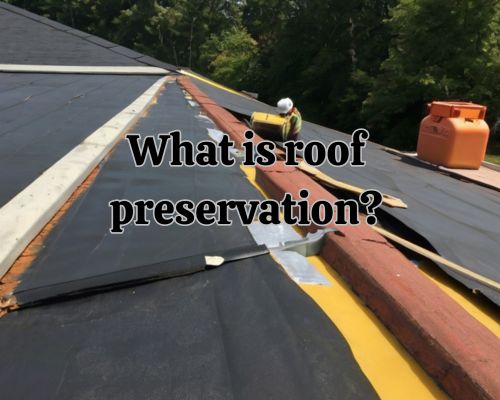
What is Roof Preservation?
Essential Practices and Benefits
Roof preservation involves a series of proactive maintenance tasks designed to extend the lifespan and maintain the functionality of your roof. Regular roof care not only protects your investment but also prevents expensive repairs down the line.

By taking steps to preserve your roof, you can avoid significant damage and ensure it continues to shield your home from the elements.
Maintaining your roof includes routine inspections, cleaning, and minor repairs to address wear and tear caused by harsh weather conditions.
Roof preservation also encompasses selecting the right materials suited to your local climate, as this helps in preventing common issues like leaks and material degradation.
Proper care habits, such as clearing debris and ensuring proper drainage, are essential in this continuous effort.
Preserve your roof by implementing rejuvenation techniques that restore its appearance and functionality.
“Methods like applying a primer and topcoat not only enhance durability but also contribute to the roof’s aesthetic appeal. Taking these steps ensures your roof remains in excellent condition for years to come.” said Charles Jimerson from CJ Commercial Roofing NJ.
Fundamentals of Roof Preservation
Roof preservation is essential to prolonging the lifespan and maintaining the functionality of roofing structures.
Key elements include regular inspections, proper maintenance strategies, and the use of suitable roofing materials.
Understanding Roof Preservation
Roof preservation involves a series of proactive measures aimed at maintaining the integrity and performance of roofs.
This includes applying protective coatings and reflective coatings to shield against weather elements like UV rays and moisture.
Using high-quality and durable roofing materials helps ensure that your roof can withstand varying climatic conditions, contributing to energy efficiency and reducing heat absorption.
The Importance of Regular Inspection
Regular inspection is crucial in identifying potential issues before they escalate into major problems.
Scheduled check-ups help detect early signs of wear and damage like cracks, leaks, or broken shingles.
By conducting inspections, you can implement corrective measures such as repairing damage and replacing worn-out materials, which prevents further deterioration.
Inspections also allow for assessments of ventilation and insulation, ensuring that the roof maintains optimal thermal performance.
Maintenance Strategies for Longevity
Adopting effective maintenance strategies is vital for prolonging the life of your roof.
Clean gutters and downspouts regularly to prevent water buildup, which can lead to leaks.
Apply protective coatings and reflective coatings to mitigate damage from weather elements and improve energy efficiency.
Regularly check for and address issues like loose shingles, moss buildup, and deteriorating seals around vents and chimneys.
Ensure proper ventilation and insulation to control moisture levels and temperature, further protecting the roofing materials.
Practical Roof Preservation Techniques
Effective roof preservation techniques focus on cleaning, regular maintenance, addressing common issues promptly, and choosing the right materials and coatings suitable for various climates. Let us get to understand more on these with Charles Jimerson from CJ Commercial Roofing NJ.
Cleaning and Maintenance
Regular cleaning and maintenance are crucial for a long-lasting roof.
Cleaning gutters prevents moisture buildup and avoids damage to the roof structure. Meanwhile, using moss and algae inhibitors can protect your roof from infestations.
Ensure you inspect downspouts, ducts, and chimneys for blockages.
Having a roofing contractor perform regular inspections can help identify and mitigate potential problems early.
Cleaning your roof extends its lifespan and improves energy efficiency by removing debris that can retain heat.
Addressing Common Roof Issues
Promptly addressing common issues like damaged shingles, leaks, and ice dams is essential.
Visual inspections can identify problems such as moisture damage, loose shingles, and broken tiles. Make sure to fix damaged areas to prevent costly repairs.
Improve drainage by clearing clogged downspouts. Meanwhile, repair or replace damaged shingles made of materials like asphalt, wood, or clay.
Lastly, address ice dams by improving insulation and ventilation to prevent moisture buildup.
Choosing the Right Materials and Coatings
Select materials suited to your local climate and roof type. Use metal roofs in areas with heavy snowfall to prevent accumulation.
Opt for materials like slate, clay tile, and asphalt shingles that can withstand harsh climates.
Apply waterproof coatings to protect from moisture damage. For historical roof preservation, use traditional materials that match the original construction. This ensures structural integrity and aesthetic continuity.
Invest in quality materials and coatings tailored to your specific needs to enhance durability. This will also reduce the need for frequent repairs.
Prioritize products that offer improved energy efficiency and heightened resistance to environmental factors.